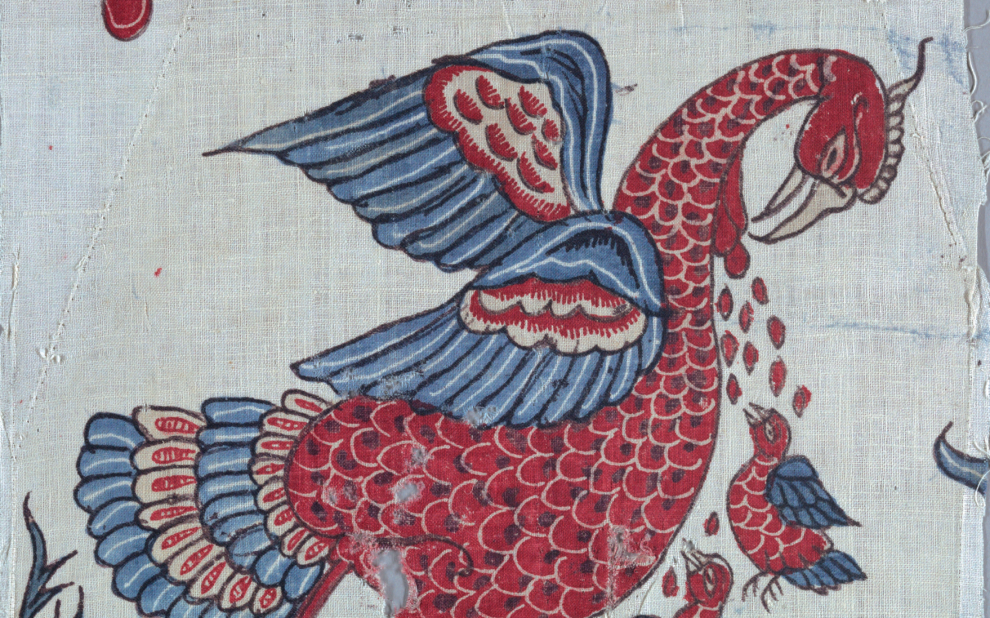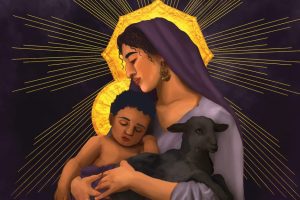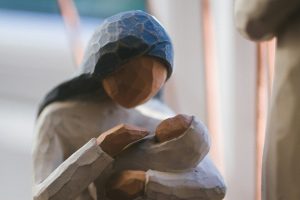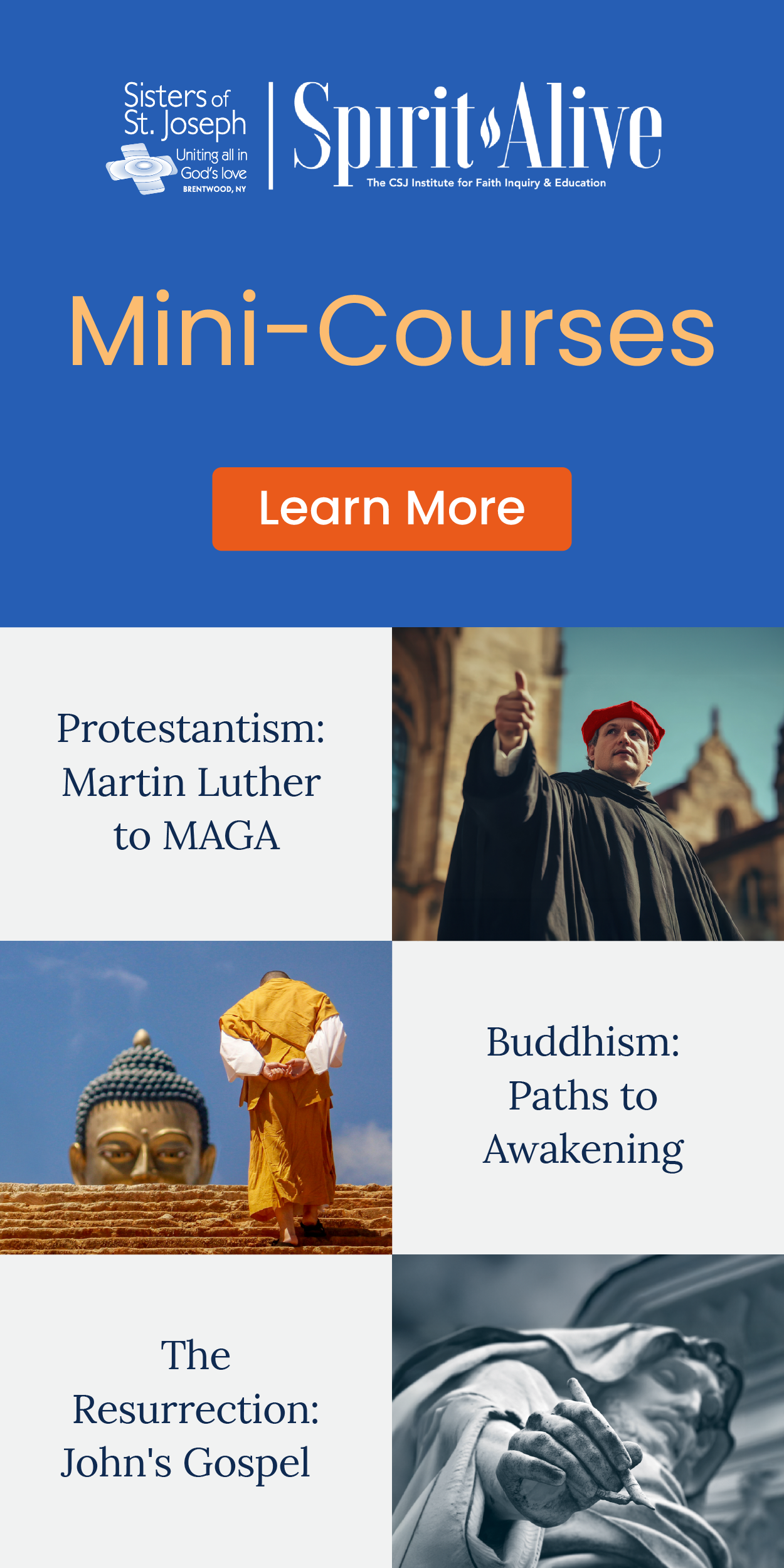While browsing a folder of religious iconography, I came across an unusual sight: the image of a saint with a swan at his side: St. Hugh of Lincoln, the Carthusian monk-turned-bishop who forged a profound friendship with a swan. Swans have a reputation for being unfriendly (despite their serene beauty). Yet as legend has it, Hugh and the swan were inseparable.
This saintly vignette is one example of how birds appear in parables and passages across sacred scripture and tradition; they have captivated the hearts and minds of saints and
scholars alike.
I’m convinced that being attentive to birds can help us better understand our world, how it is changing, and how we should respond to those changes. Revisiting the avian imagery in our faith tradition could help restore our attentive concern for these beings and the lessons their lives convey.
The dove and the pigeon
We usually associate doves with peace. This interpretation can be traced back to the Hebrew scriptures, where the prophet Noah released a dove over the flooded Earth, and it returned with a fresh olive branch, a sign of abating flood waters (Gen. 8:6–12). Today, the images of doves on peace postcards, posters, logos, and other illustrations have a biblical basis.
Doves are also associated with the Trinity. In the Gospel of Matthew, St. John the Baptist, after he baptized Jesus, “saw the Spirit of God descending like a dove [and] coming upon him” (Matt. 3:16). Based on this passage, the church embraced this avian symbolism to indicate the presence of the Holy Spirit. Today, doves appear in church mosaics around the world, representing one of the three persons in the Trinity.
Doves belong to a family of birds called Columbidae, to which pigeons also belong. From a scientific standpoint, doves and pigeons are the same species, separated only by size and feather color. In some languages, doves and pigeons are referred to by the same name. Yet while most people think doves are beautiful, pigeons are scorned.
When I lived in a city, I saw pigeons every day. They were regarded by many people as messy, inconvenient, chaos-causing pests—but if that’s the case, it is humankind’s own doing. We bred and domesticated these birds for food, and then, as cities were built, we incorporated pigeons into our streets and residences. Humans learned pigeons have a homing instinct; we used this to our advantage in wars (for example, the military depended on carrier pigeons to transport messages in World War II). When we finished with pigeons, however, we left them to fend for themselves on city streets—which they did.
While the dove evokes peace or the Holy Spirit, the lowly pigeon can also teach us to reflect on our selective care and concern for God’s creatures—which is not confined to pigeons, but extends to our fellow human beings as well.
The wounded pelican and the wounded earth
If you live near a coastal beach or lagoon, you’ve likely seen pelicans. With their prominent beaks, they scoop up nourishment for themselves and their young. These striking birds have been depicted in various Christian artworks, and their symbolic meaning both predates and has been incorporated into the Christian tradition.
Ancient Roman legends say that during times of famine, the mother pelican would wound her own breast to feed her children. The Physiologus, an early Christian text composed somewhere between the second and fourth centuries, uses the mother pelican as a metaphor to describe Christ’s self-gift to humankind. The church fathers also adopted this interpretation of the pelican, with St. Thomas Aquinas incorporating it into his eucharistic hymn, “Adoro te devote”: “Lord Jesus, Good Pelican, clean me, the unclean, with your blood, one drop of which can heal the entire world of all its sins” (“Pie Pelicane, Jesu Domine, Me immundum munda tuo sanguine: Cujus una stilla salvum facere totum mundum quit ab omni scelere.”)
Over the years, the pelican captivated other Christians’ imaginations. Florentine poet Dante Alighieri wrote in his Paradiso that Christ is “our Pelican who shed His blood in order to give eternal life to the children of men.”Adorning tabernacle doors, holy linens, and mosaic art, the pelican evokes Christ who nourishes us with motherly love, even as we wound him.
Today, the wounded pelican also conveys a sobering reminder that humankind is injuring the natural world. I’ve seen photographs of pelicans swimming through plastic waste, their beaks tangled in plastic bags, netting, and water bottles. Now when I see the pelican, I think of the damage done to our waterways and the wildlife reliant on them. The pelican is a painful reminder of our injuries to God’s creation. It also is an exemplar, encouraging us to mend the wounds we’ve left in our wake.
The goldfinch reminds us of our duty to creation
The European goldfinch also appears across the centuries in Christian art and story, often with Mary and the Christ child,
as Herbert Friedmann, a 20th-century ornithologist at the Smithsonian, counted at least 486 Renaissance artworks that contain the goldfinch as a spiritual symbol. In some artistic depictions, Christ holds the bird, reminding the viewer of the soul’s safety and eternal life.
In one Christian tale, a goldfinch fluttered onto Christ’s head as he ascended Calvary. When the bird plucked a thorn from his crown, blood spurted onto the bird’s throat and beak, explaining why European goldfinches have red faces.
When the bubonic plague swept across Europe, many people credited the goldfinch with the ability to protect them from disease and death. This belief may have stemmed in part from the traditional connection to Christ, but it was also related to the goldfinch’s fondness for thistle seeds, since people believed thistle to have medicinal qualities.
Today, some American goldfinches inhabit Pennsylvania, my state of residence, year-round, but many also migrate for the winter. These birds rely on native plants such as thistle and black-eyed Susan to sustain themselves. Sadly, due to climate change, these flowers’ Pennsylvania blooming season no longer overlaps with many goldfinch migration patterns.
In the Gospel of Matthew, Jesus reassures his followers of God’s providence by telling them to consider “the birds of the air; they do not sow or reap, they gather nothing into barns, yet your heavenly Father feeds them” (6:26). God created a bountiful world—but yet again, human greed has whittled away at the divine design. The goldfinch calls us to halt our disruption of ecological systems and restore God’s great work in the world.
The mother hen, an image of divine love
In the Christian scriptures, Christ uses the symbol of a mother hen to express his desire to protect God’s people: “How many times I yearned to gather your children together, as a hen gathers her young under her wings” (Matt. 23:37; see also Luke 13:34).
This symbol not only conveys Christ’s deep love for humankind; it also conveys a pressing, message for our times. Since 2022, scientists in the United States and abroad have been monitoring the spread of H5N1—avian influenza—which has killed large swaths of the domestic bird population. The cruelty of U.S. industrial agriculture—from overcrowding to feeding livestock chicken manure—has created the conditions for this disease to spread. Today, avian influenza threatens hens and human beings alike (among other species), resulting in culled flocks and suffering communities. The mother hen is a reminder of our vulnerability, our priority to care for one another, and our failure to do so.
As Jesus reminds us, we should “look at the birds of the air” and receive their wisdom as a guiding lesson. The church’s use of avian images, especially in relation to Christ, can help steer us in the right direction as we navigate our wounded world.
This article also appears in the August 2025 issue of U.S. Catholic (Vol. 90, No. 8, pages 21-22). Click here to subscribe to the magazine.
Image: Fragment of mordant-painted and dyed cotton, Cooper Hewitt, Smithsonian Design Museum














Add comment